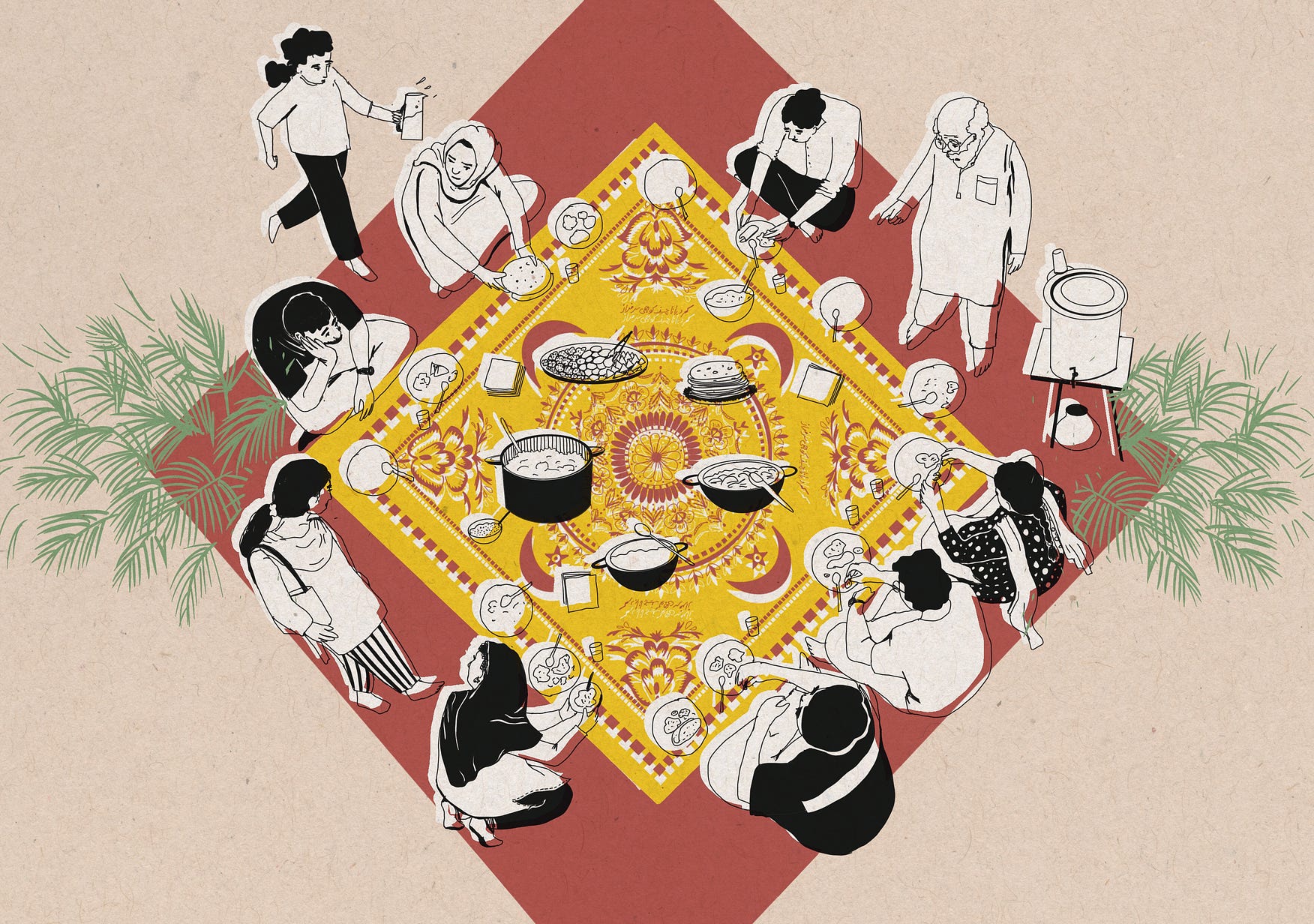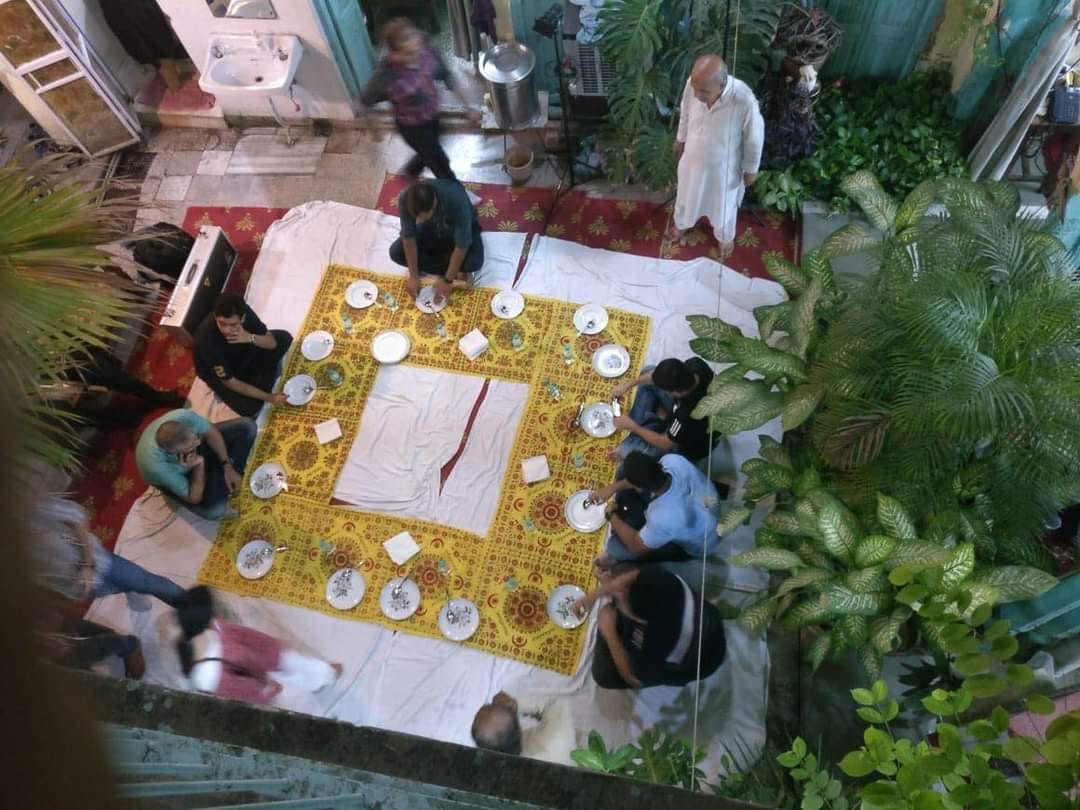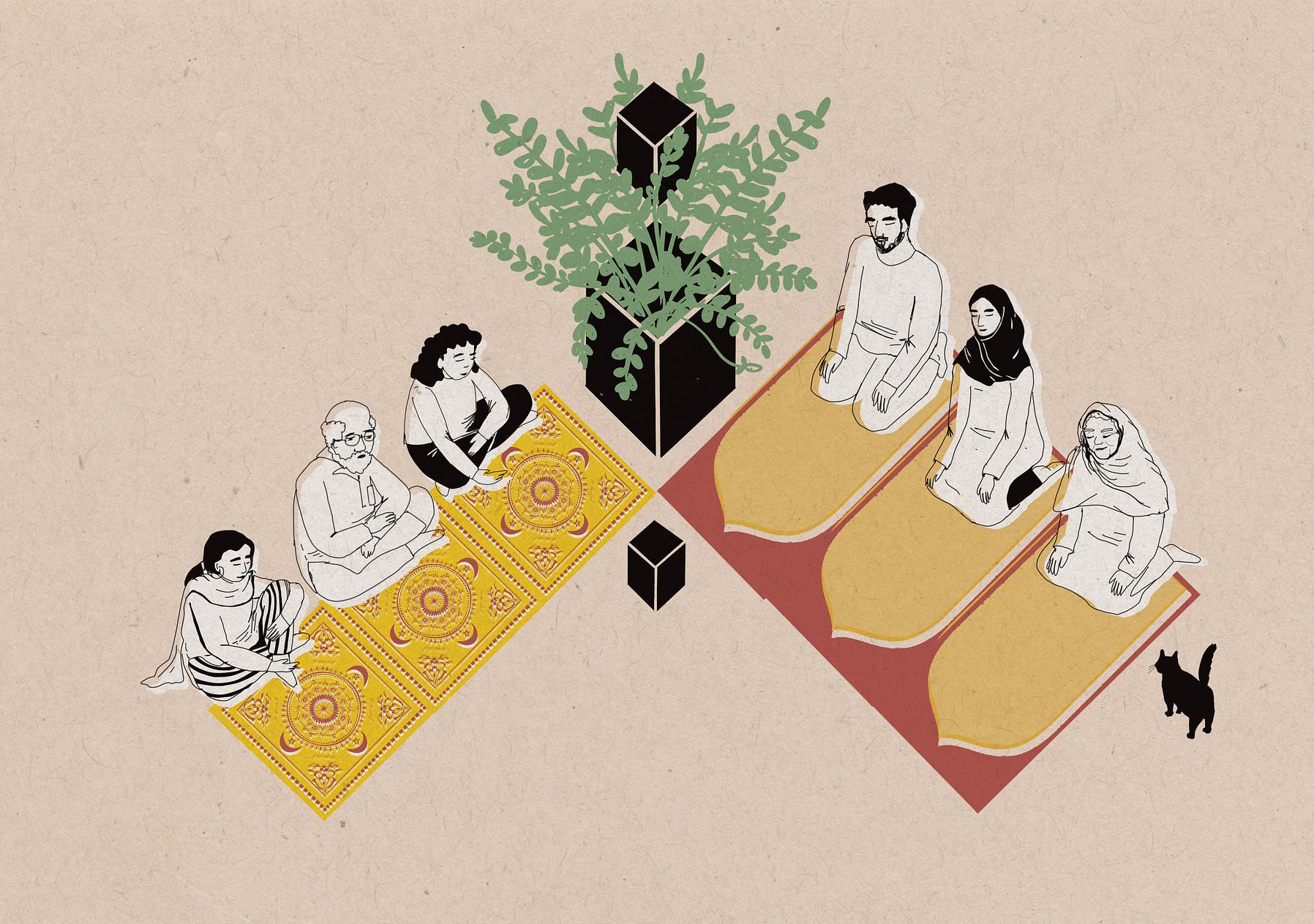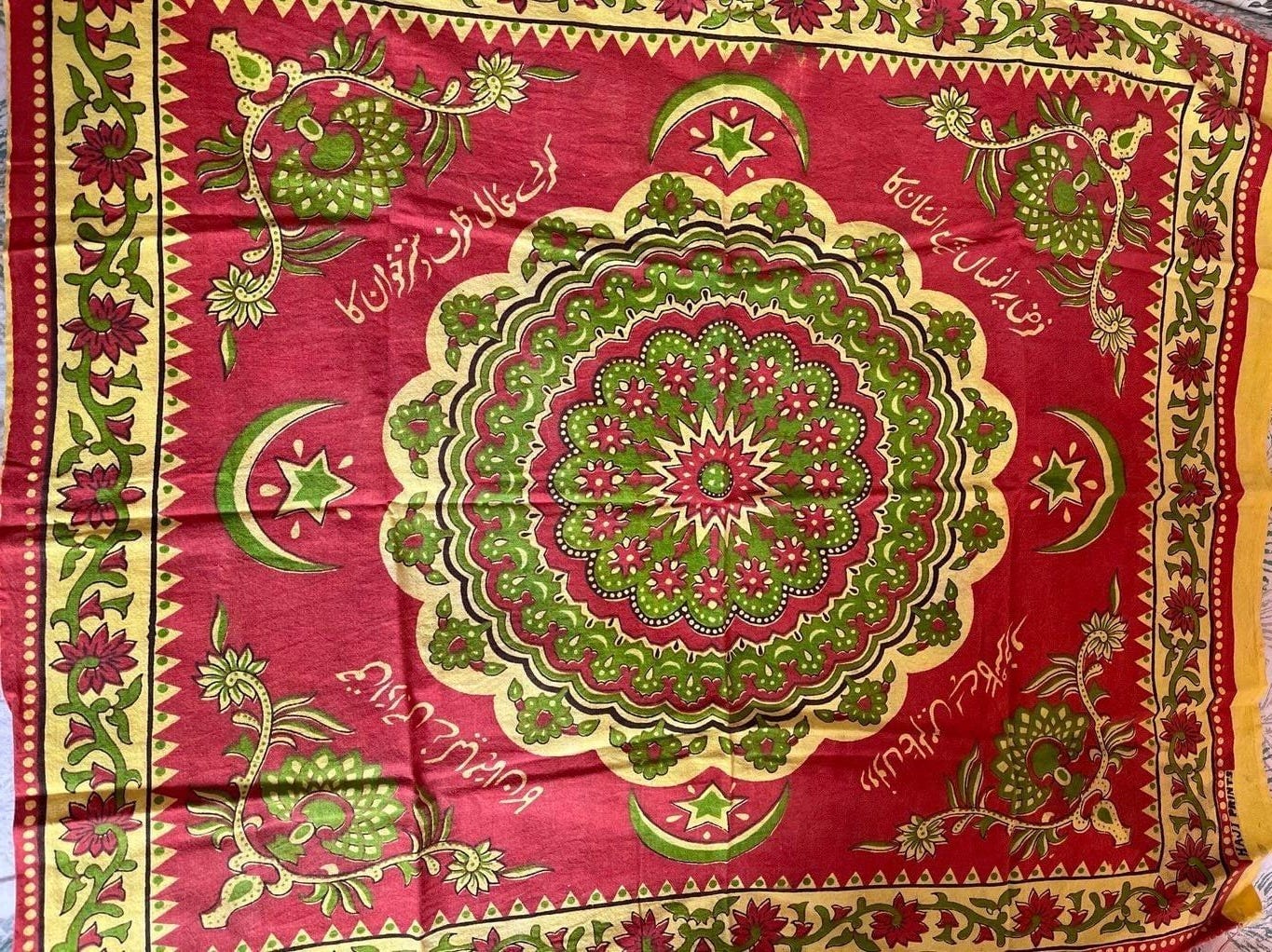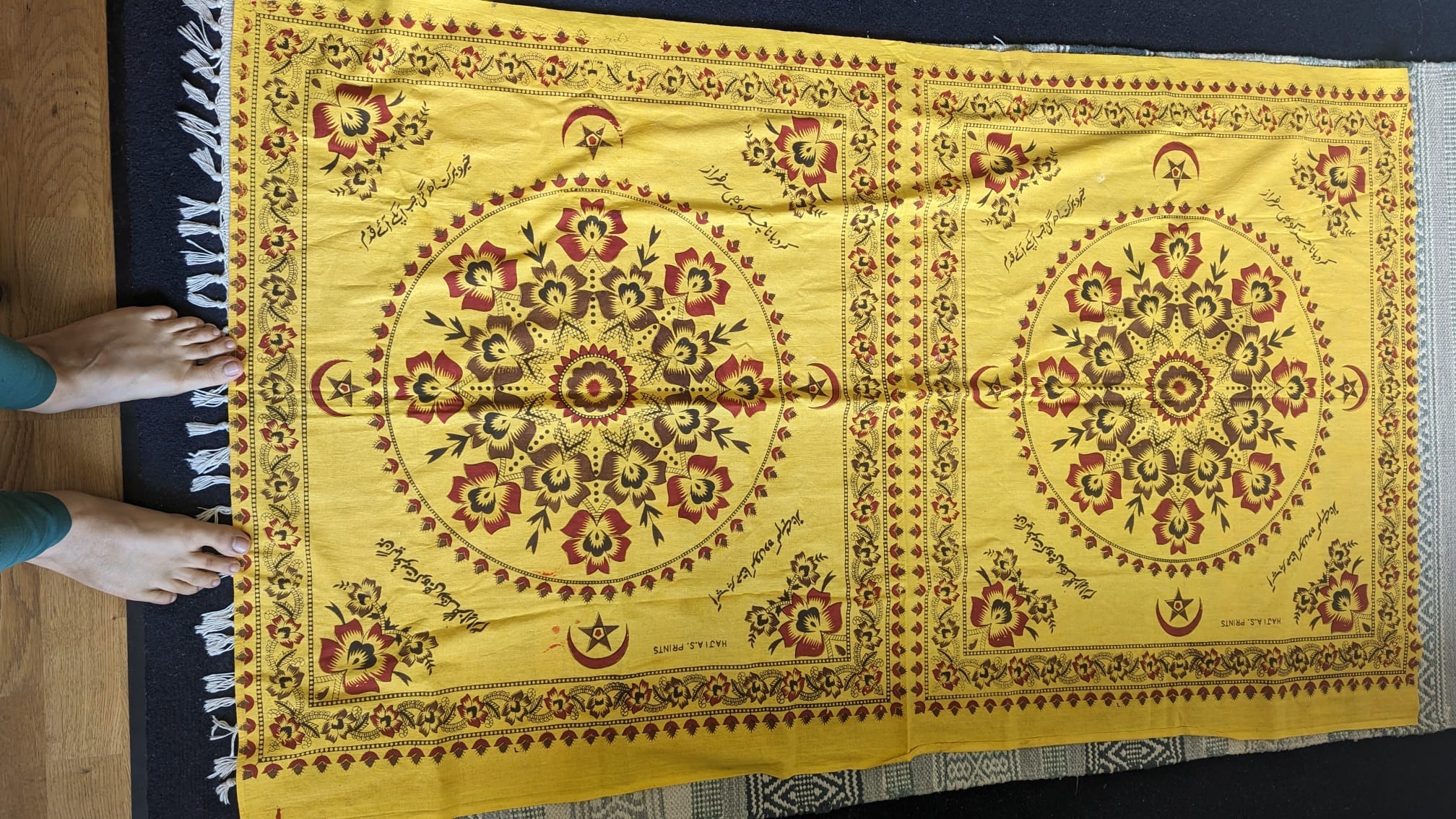Folds of AbundanceA cultural history of eating together on the dastarkhwan. Words and photographs by Farah Yameen. Illustrations by Sabba Khan.
Folds of AbundanceA cultural history of eating together on the dastarkhwan. Words and photographs by Farah Yameen. Illustrations by Sabba Khan. The story goes that there was once a Prophet Suleiman in Jerusalem, a ruler of famously phenomenal wealth and power who could speak to animals and djinns. One day, Suleiman asked permission of God to throw a feast for all living kind. At first he was refused; what he had asked to do was a task beyond any human being. But Suleiman persisted, and eventually he was permitted to employ an enormous number of cooks to whip up a feast, which was laid out on a long dastarkhwan stretching into the horizon. When the food was ready, the animals arrived. Among them was a fish, majestic in size, which devoured all the food before the other animals could begin. Then it said to Suleiman, ‘I have barely eaten. Your dastarkhwan did not fill even a corner of my belly,’ and it sank back into the deep waters from where it had come. Every time my grandmother repeated this story it had various embellishments, but its essence remained the same: Suleiman’s grand feast had failed. And the site of this failure was an object with which we were familiar: the dastarkhwan. The dastarkhwan is a length of cloth that is laid out on the floor during mealtimes across Muslim homes in South Asia. This cloth serves as the table, transforming beds, floors, corridors, and streets into dining areas wherever it is laid. I have eaten at dastarkhwans on raised concrete platforms, on bedroom floors and beds, on paved courtyards, and even at one spread out on a table for effect. The dastarkhwan occupies a space for the duration of a meal and the conversation that follows, disappearing into a few nondescript inches of folded cloth the moment both come to an end. It does not become a site for homework or forgotten groceries, or loom idle and unoccupied in rancorous homes. Its singular purpose is to serve as the site for sharing meals as a family or community. Only food resides on the dastarkhwan. Growing up, the dastarkhwans I knew were lengths of thick cotton cloth which, once solid red, had faded pink from many uses. They were spotted with oil and dal spills, with threads sticking out at the edges. It wasn’t until my twenties that I encountered more flamboyant dastarkhwans: brightly coloured (yellow, black, red, or occasionally green), industrially manufactured and printed, and adorned with geometric floral patterns that enclosed a circle at the centre. In this central circle sat florid Urdu poetry in praise of God’s blessings or reminding guests of their rights at the table. On sterner variations, the poetry took a more edifying tone, instructing moderation and gratitude, and an acknowledgement of the others that partook in the meal. In the years that followed, I found near-replicas of these dastarkhwans, all with the same geometric layouts and kitsch couplets, in Muslim homes across the subcontinent. Burhan Quraishi – whose family in Kashmir has always eaten on a dastarkhwan – tells me that a yellow cloth to dine at has always been a permanent fixture at their meals. There was also a special-occasion dastarkhwan, with a thick red velvety weave, displayed only when serving tea for special guests, complete with pastries from Srinagar’s local bakeries. Depending on the region, the fabric and prints of the dastarkhwan changed, as did the foods eaten on them. Mumbai-based researcher Sana Contractor remembers eating at hand-block-printed dastarkhwans, brought as gifts to Mumbai by family from Karachi, in times when people could travel frequently between India and Pakistan. Though the social anthropologist Ayesha Mualla often ate at a dining table growing up, she notes that the dastarkhwan centres the ethos of a communal right to the food being served. ‘We always offer a place to anyone who visits at mealtime,’ she says. ‘Not doing that would be akin to a sin.’ In many homes, the dastarkhwan summons fundamental ideas of South Asian Muslim commensality. One such idea is ‘barkat’, which, in the Urdu we speak, most often refers to blessings of abundance, or material and immaterial abundance itself. A large brood of children is barkat. A flush harvest is barkat, as is an abundance of faith, spirituality, or generosity. On the dastarkhwan, barkat is perceived in the sharing of food, but is perhaps also evoked in its material – cloth or plastic – that can be spread as broadly or as closely as necessary to accommodate the people present. Laid on the floor, the dastarkhwan becomes a site of humility and vulnerability, essential preconditions to community. Pleasure is solicited through a communal satiation of appetite, and the connected soul of everyone eating. Barkat on the dastarkhwan is set in motion by food, but also by etiquette. Old Delhi’s Khalid Saleem, who writes using the pen name Mahagyani (or ‘learned one’), tells me that these etiquettes consider the lifestyles of the diners. ‘For those with sedentary lifestyles, a deep squat with thighs pressed against the stomach is the advised position – it prevents the person from eating too much. But the active may sit on their heels so they can eat well,’ he says. Meanwhile, Sana tells me that at her family’s dastarkhwan, they ‘sit on our heels with our legs folded so everyone has enough space. I was a chubby kid, so I was allowed to sit cross-legged. But ideally, you took [up] as little space as possible.’ It strikes me that Sana’s pose replicates the way one sits for namaz or prayer five times a day in congregations: shoulder to shoulder. On the dastarkhwan, everyone present becomes a co-creator of barkat, using their gestures and bodies to welcome both kin and strangers. At the long dastarkhwans in my family’s ancestral home in Bihar (where we gathered every year), the comings and goings of diners were sudden and uncountable. Perhaps it was exquisite planning on the part of my elders, but I remember how, as we invited others to eat and accordioned ourselves to make space, the food gracefully extended itself until the last person on the dastarkhwan was fed. Saleem asked me to consider this experience: ‘Have you ever noticed that if you make dinner for four people, and each person eats their portion by themselves, it may run short, but the moment the meal is shared, there is more than enough for everyone?’
I read these couplets six years ago, printed on the first dastarkhwan I owned. When I read it, it was unlike the few Urdu couplets I was familiar with by beloved poets like Mirza Ghalib and Faiz Ahmad Faiz, poems that comprised the Urdu literature taught in universities and quoted at protests, meticulously metered and perfectly timed. The poem on my dastarkhwan, in contrast, was a comical arrangement of words, with an awkward meter. It was a simple, earnest rhyme without rhythm or metaphor, leaning into its Persian antecedents to compensate for the lack of finesse. As I encountered more dastarkhwans, I realised that the poems printed on them were similar in theme, rhythm and tone, so I searched for their authors, but without success. Who penned them, I wondered? Was there a night when friends sat together along a dastarkhwan, drawstrings loosened post-meal, to discuss which one would go to print? Surprisingly, the poems repeat themselves in dastarkhwans used across the linguistically diverse regions of the subcontinent like Bihar, Uttar Pradesh, Kashmir, and Telangana. This is despite the differences in the tones and syntax of Urdu spoken within them. The dastarkhwans’ poetry is a demonstration of Urdu and its script’s hold on the South Asian Muslim imagination. In India, despite repeated efforts by Hindu nationalists to expunge Urdu – positioning it as foreign, a ‘Muslim language’ to distance it from its sibling, India’s ‘official’ Hindi – Urdu has melted inextricably into cultural and everyday expression. For Indians across faiths, the story of street theatre, Indian cinema, and sufi spiritualism in the country is impossible to tell without Urdu. And although revivalists have focused on highbrow Urdu poetry and prose in their efforts to centre Urdu as an Indian language sans religious affiliations, it is the more popular, colloquial forms of the language that have insured its life. To Indian Muslims, moreover, the dastarkhwan’s poetry harkens to a shared aesthetic in many traditions of Muslim art and architecture across the subcontinent. Under the Muslim patrons and rulers of India, and especially during Mughal periods, architecture focused on geometric lines, mirrored and radial symmetries, with Persian Poetry and Quranic ayats carved and inlaid on jambs, spandrils, and above the crown of arches in historical cities like Delhi and Ahmedabad. The dastarkhwan’s patterns - though more simplistic and rudimentary - resonates with these aesthetic traditions. It summons the imagery of Delhi’s Mughal gardens, Agra’s Taj Mahal, and monuments like the Bibi ka Maqbara in Aurangabad. For the handful of us who have acquired a dastarkhwan recently, these connections signify an assertion of a distinct cultural identity beyond broad-brushed representation of biryani and skullcaps. Ayesha acquired one for this reason five years ago. She points out that from the 1960s to the 1990s, appearing religiously secular was a signifier of upward mobility for Indian Muslims. The dastarkhwan, as a markedly Muslim way of eating, would not uphold this position. But, in the years leading up to the 2000s and beyond, assertions towards a Muslim identity became a conscious political stance. For people like Ayesha and myself, it was a way to counter the atmosphere of growing Hindu majoritarianism, in which the details of Muslim life in India were routinely attacked and invisibilised. Today, the dastarkhwan cannot be essentialised to an object around which genteel Muslims execute refined etiquettes of communal eating. When protests against legislations that targeted Muslim citizens mushroomed in Delhi in 2019, food was spread out on makeshift sheets to feed the protestors. In Old Delhi, stiff plastic dastarkhwans are unfolded to serve a Ramadan iftar picnic that rivals the colours of the plastic’s bright print. Dastarkhwans are for celebration: at weddings in Hyderabad, pristine white sheets, named chandni or moonshine, were used to serve guests before it became modish to serve buffet-style meals. They’re also for disapppointment, perhaps like the kind Sulaiman’s guests felt when they went unfed, and for tension, like the eight years that my mother and I spent embattled over my refusal to enter marital life, our loud silences looming heavily over our meals. It is perhaps because of the dastarkhwan’s ability to be agile through space and time that my partner and I chose not to buy a dining table when we rented our first house together in Delhi. Why would two people want to sit at a dining table, with its solid, vast distance between them? Instead, we acquired a 5x3 metre length of dazzlingly yellow cloth, adorned with bright floral patterns, which we spread whenever a meal required a table setting of any sort. In the years since, this dastarkhwan has offered up curried plantain and puris, Vietnamese summer rolls, murgh musallam, harissa tray-bakes. On one ambitious occasion in Cambridge (where we now live), it hosted a large vat of nihari, shared with our friends at the time. Despite the dastarkhwan’s presence in the urban Muslim household, and its continued use in the subcontinent at large, the demand for the printed cloth dastarkhwan has been dwindling. Arshad Kafeel, a block carver and textile artist from Pilkhua, Uttar Pradesh, has been printing dastarkhwans for two generations, but now finds that bed linen and fabric generate more revenue. He is currently leading his workshop to revive block printing and come up with a style that is unique to his textile printing hometown of Pilkhua, but the dastarkhwan does not feature in this plan. When I ask him if he uses the dastarkhwans he prints, Arshad laughs sheepishly. ‘We use the new rolls of waterproof dastarkhwans that feel like canvas,’ he says. ‘They are easier to clean.’ Our own yellow dastarkhwan is folded deep in the recesses of my linen drawer, making an appearance only on occasions of significance. But it reaches out from memory to remind me of the faded red dastarkhwans of my childhood, of frugal meals with my maternal grandfather – a chicken leg in a light broth, a small phulka roti, boiled eggs, a seasonal fruit, banana chips, caramel custard – that never left me discontented. Away from home, it is a reminder of the value of community – to nurture friends, but also strangers, who may not become friends but who will remember a meal shared. Often, when I eat breakfast and lunch alone, the couplet from Burhan’s dastarkhwan comes to mind. ‘Rizq bheje hai falak par se khuda, Tu zamin par dhundhta hai ja baja,’ it chides me. Why do you scramble for blessings and sustenance on this earth? When it is bestowed upon you from the heavens. Credits
You're currently a free subscriber to Vittles . For the full experience, upgrade your subscription. |


